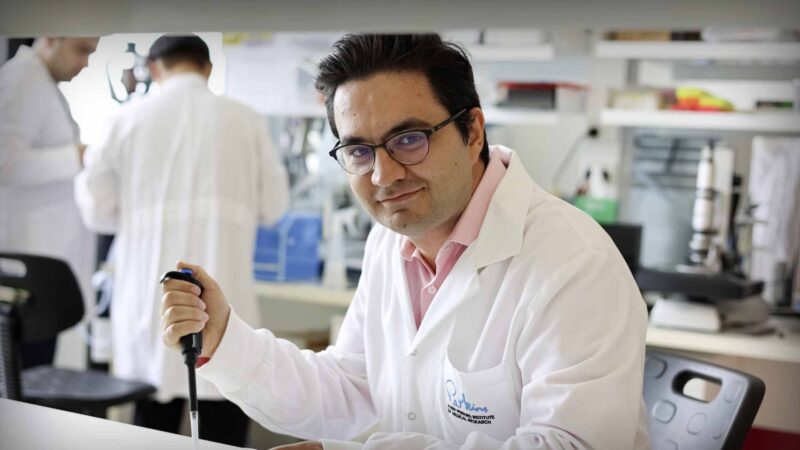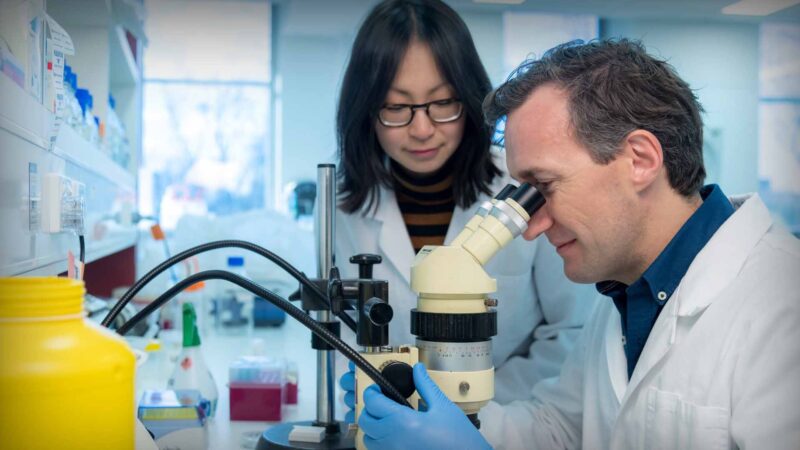RESEARCHER PROFILE
Assoc Professor Cedric Bardy, SAHMRI (2023)
Director of The Laboratory for Human Neurophysiology, Genetics & Stem Cells
South Australian Health and Medical Research Institute (SAHMRI) &
Professor, Flinders University
Adelaide, South Australia
Filmed November 2023
Associate Professor Cedric Bardy is the Director of The Laboratory for Human Neurophysiology, Genetics & Stem Cells, located at SAHMRI. South Australia.
His current research uses preclinical, patient-derived cell models to test innovative therapeutic strategies, with a current focus on Parkinson’s disease, brain cancer and childhood dementia (Sanfilippo syndrome).
His work has established a platform to facilitate the discovery and validation of treatments for brain disorders. Their research is at the frontier of human cellular neuroscience research and translational applications that benefit global public health.
In particular, Cedric is the inventor of BrainPhys; a neuronal medium broadly used to culture human neurons in vitro, commercialised by STEMCELL Technologies.
The ability to grow human brain cells in a petri dish opens up new possibilities for research and discovery in neuroscience.
The BrainPhys medium allows human brain cells to function as they would in the adult human brain, revolutionizing research in labs across the world.
Cedric Bardy’s research enables researchers to study human brain disorders in a more physiological context, potentially leading to new treatments for brain cancer, Parkinson’s disease, and Sanfilippo Syndrome.
Cedric Bardy’s international journey from France to Canada to Australia and then to the United States showcases the global nature of scientific research and collaboration.
The passion for neuroscience stems from the fact that everything we care about as humans is influenced by brain activity.
Cedric Bardy is passionate about finding ways to treat the brain when things go wrong, showing a deep commitment to neurological research.
You Might also like
-
Computer science approach to detecting dementia
Watch Xinyi Wang, a researcher at the Wicking Dementia Research and Education Centre, University of Tasmania talk on identifying new approaches to detecting dementia.
-
Non-invasive tools for CVD screening and monitoring
Dr Hadi Afsharan is a Research Fellow Cardiovascular Science & Diabetes at the Harry Perkins Institute of Medical Research; is a translational research and innovation fellow in medical technologies at The University of Western Australia, holding dual titles as Translational Fellow and Innovation Fellow within UWA’s Medical School and the FHRI (Future Health Research and Innovation) program.
-
Stem cell therapies for enteric neuropathies
Dr Stamp is a Group Leader in the Department of Anatomy and Physiology at the University of Melbourne, Australia. Dr Stamp’s PhD research (with Prof Martin Pera, Monash University) focused on the derivation of hepatopancreatic progenitors from human embryonic stem cells. He then joined the lab of Dr Don Newgreen at the Murdoch Childrens Research Institute where he began working on development of the enteric nervous system (ENS), before joining Prof Heather Young’s lab at the University of Melbourne, where he focused on developing a stem cell therapy to treat gut motility disorders such as the paediatric enteric neuropathy Hirschprung disease.



